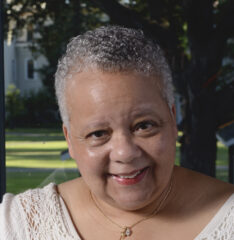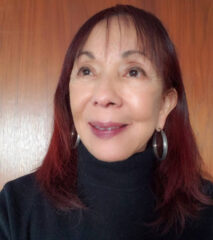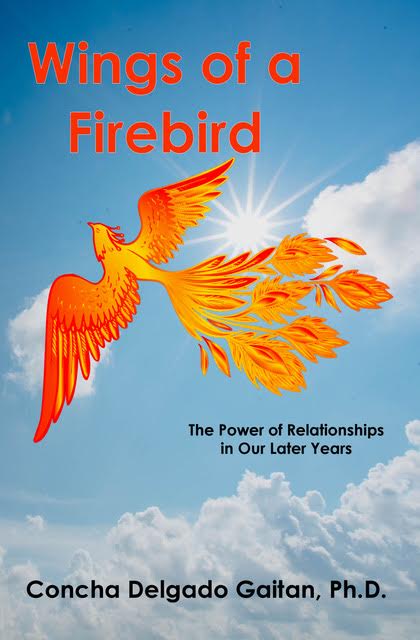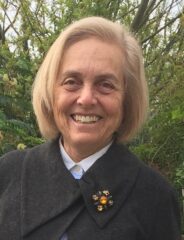
Joanne Rodrigues is an experienced data scientist and enterprise manager with a master’s degree in Mathematics, Demography, and Political Science, and a bachelor’s degree in International Political Economy from Georgetown University School of Foreign Service. While in Washington D.C., she was a research assistant at the Center for Population and Health and the White House Counsel of Economic Advisors. She pioneered new techniques at Sony PlayStation, led all of MeYou Health’s data science efforts, and founded a company ClinicPriceCheck.com, featured on TechCrunch Battlefield SF 2020. She has experience authoring technical books. Her latest book, Product Analytics: Applied Data Science Techniques for Actionable Consumer Insights, was part of Addison-Wesley’s Data and Analytics Series. She’s recently joined as the Membership & Tech Manager for the Women’s National Book Association-San Francisco Chapter.
Let’s start by talking a bit about your writing process. What inspires you as a reader and a writer?
(JR): What inspires me most is exploring the world through a new perspective (while also acknowledging it’s probably not fresh, given the approx.12 billion people who have lived throughout human history).
Additionally, I enjoy uncovering connections that defy wisdom, challenging prevalent narratives and tropes that lack truth. As someone who identifies as neurodivergent and has a profound curiosity about people and society, particularly about social order and how society functions, writing and reading is a perfect medium to explore humanity.
What do you tend to read in your free time, and can you share a recent book or piece that impacted you?
(JR): I have a passion for thrillers and technical books. At the moment, I’m engrossed in “When Justice Sleeps” by Stacey Abrams. What captivates me most is Abrams’ skillful integration of real-world political elements concerning the Supreme Court and judiciary within the fictional narrative.
Could you tell me a little more about your latest book, Product Analytics: Applied Data Science Techniques for Actionable Consumer Insights? What encouraged you to write it, and how do you think it could help readers hoping to understand and grow their customer base?
(JR): The reason that I wanted to write this book is simple: when I started working as a data scientist on a web product, there were very few books available on how to work with consumer data. My managers were demanding insights on how to improve the business, to increase revenue and lower costs, but my training in algorithms and machine learning really didn’t provide the tools needed to do the job. I met lots of people like me ranging from marketers to executives that really didn’t know what to do with all this newfound data. Many made million dollars plus mistakes because they misunderstood why customers were doing what they were doing. The goal of the book is to fill that gap — provide the appropriate steps and application examples of how to apply statistical inference in drawing insights from consumer behavior. While not focused solely on growing a user base, the book explores how to generate actionable business insights related to consumer behavior from applied statistics and machine learning techniques.
You have an extensive academic and professional background in data science, mathematics, demography, and political science. When did you first realize that you’d like to work with data at a deeper level?
(JR): I’ve always been fascinated by society and human behavior. Data is a way to learn about human behavior in the aggregate. In the early 2010s, during the explosion of clickstream data representing vast amounts of aggregated human behavior, I found myself drawn into data science. This flood of information was exciting, offering opportunities to explore the nuances of social behavior through millions of online interactions and decisions.
Do you have any tips for new writers, non-fiction or otherwise?
(JR): Living with dyslexia and an auditory processing disorder has presented formidable challenges in reading and writing. Precise auditory processing plays a pivotal role in comprehending both written and spoken communication. However, due to my poor processing, I miss the subtle nuances in speech, such as transitions in conversations. For this reason, I struggled for years to add those transitions to my speech and writing.
As you can imagine, I had to develop coping mechanisms for my hearing, reading, and writing deficiencies. It taught me life is all about developing coping mechanisms for your weaknesses and forging forward on your strengths. To this day, I am a slow reader, but that has never stopped me from writing prolifically and learning how to mimic other writers’ use of transitions.
Books are a beautiful medium of human expression – and one that lasts the tests of time – unlike social media. Don’t give up on books.
The universe is constantly changing and you have no idea where it will be next, so get a day job and then follow your dreams!
Finally, I hear that you’re currently working on a few other writing projects, a thriller and a memoir. Is there anything that you can share about these upcoming books?
(JR): Nope, I want to keep those under wraps until I finish them.



 Written by
Written by  Fellow storyteller and WNBA-SF friend, Kate Farrell, attended Beatrice Bowles’ Memorial, November 23, 2021, at the Hall of Flowers in Golden Gate Park with hundreds in attendance. Farrell reports, “The champagne and tea reception was lavish with all the trappings of a British high tea, a tiered service of tea cakes and savory sandwiches. One of the large serving tables featured Bea’s latest book, Spider Grandmother’s Web of Wonders, fancifully decorated by a family member with table centerpiece decor inspired by the book, a blend of floral photographs, myths, and folktales.”
Fellow storyteller and WNBA-SF friend, Kate Farrell, attended Beatrice Bowles’ Memorial, November 23, 2021, at the Hall of Flowers in Golden Gate Park with hundreds in attendance. Farrell reports, “The champagne and tea reception was lavish with all the trappings of a British high tea, a tiered service of tea cakes and savory sandwiches. One of the large serving tables featured Bea’s latest book, Spider Grandmother’s Web of Wonders, fancifully decorated by a family member with table centerpiece decor inspired by the book, a blend of floral photographs, myths, and folktales.”







 LBM: Yes—in particular, why I find it problematic. It may seem like a strange subject, but to me, the issue remains a fascinating convergence of history, ethics, medicine, and sexuality. I wrote my first novel,
LBM: Yes—in particular, why I find it problematic. It may seem like a strange subject, but to me, the issue remains a fascinating convergence of history, ethics, medicine, and sexuality. I wrote my first novel,  LBM: Lots! The manuscript sat in a drawer, off and on, for over twenty years. I kept taking stabs at it, but somehow, I couldn’t get it right. I would pull it out, instantly see what was wrong with it, fix it, send it out to beta readers, spend weeks or months incorporating their feedback, send it out to agents, get rejected, and put it back in the drawer. This happened so many times that I wrote all my other books in between! So even though
LBM: Lots! The manuscript sat in a drawer, off and on, for over twenty years. I kept taking stabs at it, but somehow, I couldn’t get it right. I would pull it out, instantly see what was wrong with it, fix it, send it out to beta readers, spend weeks or months incorporating their feedback, send it out to agents, get rejected, and put it back in the drawer. This happened so many times that I wrote all my other books in between! So even though 
 MK:
MK:
 NS: You have taught writing for decades. How did you begin teaching and can you share some outstanding moments from that part of your life?
NS: You have taught writing for decades. How did you begin teaching and can you share some outstanding moments from that part of your life? Barbara Rose Brooker, MA, is an age activist, teacher, painter, poet, and author. She has published 13 books, won a National Library Award for her poetry, and has appeared often on “The Today Show,” “The Talk,” “ET” and Andy Cohen’s, “Watch What Happens Live.” Also a columnist, she has published “Boomer in the City” for the
Barbara Rose Brooker, MA, is an age activist, teacher, painter, poet, and author. She has published 13 books, won a National Library Award for her poetry, and has appeared often on “The Today Show,” “The Talk,” “ET” and Andy Cohen’s, “Watch What Happens Live.” Also a columnist, she has published “Boomer in the City” for the 
 MD: This book is an affectionately crafted narrative I would have loved my beleaguered and confused mother to read, for if she had she would have seen the love I held for her despite all that separated us. In peeling away the layers of my past with careful attention, I discovered that my mother had given me some great gifts – not only of my life, but also art, beauty of all kinds, humor, good food, a love of cats, a sense of daring and adventure, the notion of standing out as different from all the rest. When I pause to feel the gratitude for those gifts, I feel a great warmth in my heart that I hope is evident in Bowing to Elephants. It would have been a great thing if she had been able to understand this…
MD: This book is an affectionately crafted narrative I would have loved my beleaguered and confused mother to read, for if she had she would have seen the love I held for her despite all that separated us. In peeling away the layers of my past with careful attention, I discovered that my mother had given me some great gifts – not only of my life, but also art, beauty of all kinds, humor, good food, a love of cats, a sense of daring and adventure, the notion of standing out as different from all the rest. When I pause to feel the gratitude for those gifts, I feel a great warmth in my heart that I hope is evident in Bowing to Elephants. It would have been a great thing if she had been able to understand this…